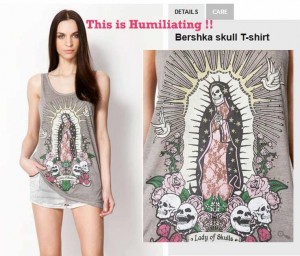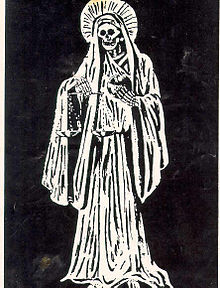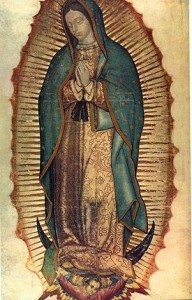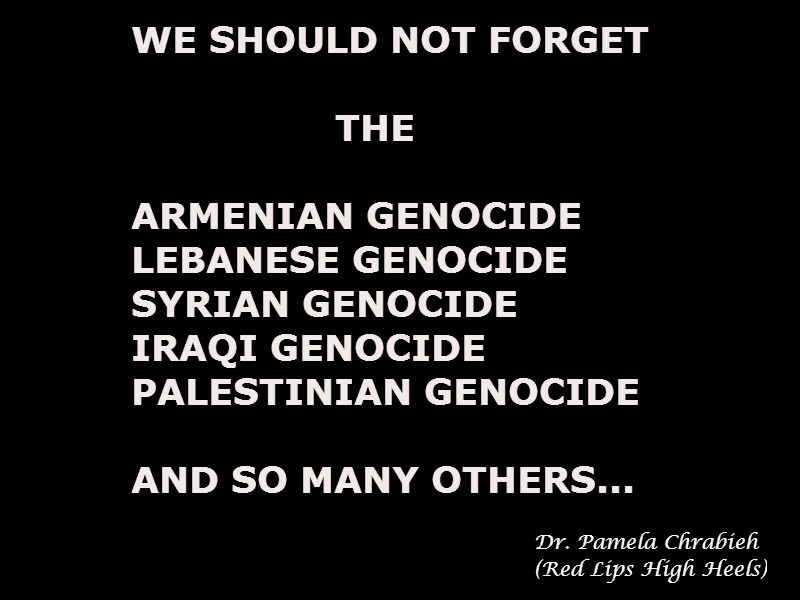 NOUS NE DEVONS PAS OUBLIER!
NOUS NE DEVONS PAS OUBLIER!
Le génocide arménien…
Le génocide libanais…
Le génocide syrien…
Le génocide palestinien…
Le génocide irakien…
Le génocide kurde…
La liste est longue. Que de massacres au nom d’une religion, confession, terre, hiérarchie ethnique et raciale, intérêts politiques et économiques locaux et régionaux, ressources naturelles, etc…
Faut-il oublier ou ne pas oublier ? Chaque semestre, mes étudiants-es me posent cette question, et à chaque fois je réponds : Nous ne devons pas oublier, non pour entretenir le cercle vicieux de la violence, mais justement pour le briser. Ne pas oublier, relire le passé, en tirer des leçons tant positives qu’amères, saisir le moment présent, déconstruire les préjugés, et se retrouver face à un futur en réconciliation avec le passé, non hanté par ce dernier.
Il est impensable d’essayer de brûler la mémoire… C’est plutôt elle qui nous brûle… Ayant survécu aux années 80 (du 20ème siècle) empreintes de la guerre physique au Liban, j’ai essayé de différer cette mémoire, mais je n’ai pu y échapper. J’ai donc tenté de l’apprivoiser et de la transformer en énergie créatrice. D’autres libanais restent ballottés entre l’amnésie et l’hypermnésie.
Sans la remémoration critique du passé, les atrocités continueront d’être perpétrées… Les esprits resteront prisonniers d’un même langage de vengeance.
« La conscience des peuples, fussent-ils les plus historiques, se forme à coup d’interrogations sur elle-même et pourrait s’établir, mieux qu’en terrain sûr, sur la réduction de ses propres failles » (Salah Stétié).
En d’autres termes, pour pouvoir parler de véritable printemps arabe, pour pouvoir renouveler la gestion socio-politique des diversités en Asie de l’Ouest – Moyen-Orient -, comme l’une des bases d’une reconstruction nationale et comme garantie d’une convivialité sociale à long terme, une des conditions essentielles est de reconsidérer les rapports au passé, de réinterroger l’histoire nationale, de la problématiser, d’identifier les non-dits et de retrouver les ressources inexploitées, au lieu d’en entretenir une vision achevée, basée sur une prétention à incarner un aboutissement, une autosuffisance, un devoir de n’avoir rien à retenir du passé.
Hymen Talk
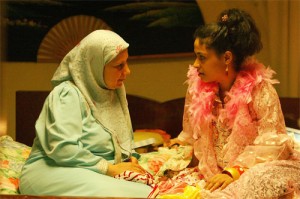 In comparison to neighboring Middle-Eastern countries, Lebanon is often regarded as a haven for moral and sexual liberty. The bubbly, alcohol-soaked nightlife and its inevitable share of wild, uninhibited party girls are endlessly flaunted through the Facebook posts of proud Lebanese and praised by astonished foreigners who have had their preconceptions of the Arab world challenged. And indeed, we Lebanese have the privilege of living in an Arab country where the youth can unapologetically go out, dance, drink alcohol, and have its share of fun. And yes, gorgeous-looking, over-sexualized actresses singers and models have come to epitomize Lebanese feminine beauty in the eyes of the world. One should not imply, however, that young women are given a positive, open outlook on their sexuality, and one should certainly not consider them to be sexually liberated. Even for Lebanese girls coming from the mini-skirt-wearing, party-going bourgeoisie, making peace with one’s sexuality is a struggle.
In comparison to neighboring Middle-Eastern countries, Lebanon is often regarded as a haven for moral and sexual liberty. The bubbly, alcohol-soaked nightlife and its inevitable share of wild, uninhibited party girls are endlessly flaunted through the Facebook posts of proud Lebanese and praised by astonished foreigners who have had their preconceptions of the Arab world challenged. And indeed, we Lebanese have the privilege of living in an Arab country where the youth can unapologetically go out, dance, drink alcohol, and have its share of fun. And yes, gorgeous-looking, over-sexualized actresses singers and models have come to epitomize Lebanese feminine beauty in the eyes of the world. One should not imply, however, that young women are given a positive, open outlook on their sexuality, and one should certainly not consider them to be sexually liberated. Even for Lebanese girls coming from the mini-skirt-wearing, party-going bourgeoisie, making peace with one’s sexuality is a struggle.
I am well aware that all across the Arab world, our sisters are fighting against the darkest, most horrific face of patriarchy: being harassed, threatened, locked up, beaten, excised, forbidden to have a car, a career or a bank account. But just because sexism is less visible in some areas of Lebanon doesn’t mean it is not there. And I find this benevolent sexism to be the most obvious in the downgrading way young girls are taught to deal with their sexuality. Bad advice can come from the mother who wants to put you through college and who wants to see you become a doctor one day, from the aunt who buys you short dresses and tight jeans, from the friend who you confide into. It is sugar-coated with love and empathy, and it even takes on the face of empowerment and support.
Girls are taught that their virginity is the most precious gift God has endowed them with, that it should be preserved from greedy boys who can’t wait to cruelly snatch it away from them. That’s why the precious hymen is only to be yielded in exchange of some serious compensation: a wedding ring, offered by a man with a situation who can financially support her till death do them apart. That is how we teach our daughters to treat their own bodies like mere merchandise that they can strategically give away to the highest bidder, and that’s how we teach them to deny themselves any pleasure that can arise from sexuality.
Girls are taught that once they are “opened”, their market value will plummet, and that no self-respecting man will ever want to marry them. That’s how we rush our girls into abusive marriages, making them believe that self-respecting men are the men who consider them as property, wanting their wives to be “unspoiled goods”, for them to “open” and use up.
Girls are taught that once they have sex, they will get overly attached to the person they have had sex with, and never be able to leave them. This is how we encourage our girls to consider themselves as weak, emotional creatures, incapable of free-will and governed by their hormones.
Girls are warned that once they “give themselves” to boys, boys will run away from them, having taken the only thing they have been after all along. With this self-fulfilling prophecy, we tell boys that it’s okay to act like jerks, to disrespect girls and to disregard feelings and relationships. As for girls, we tell them that when they have sex, they give, abandon and lose, instead of learn, experience and grow.
Girls are told that if they have sex with one boy, they will have sex with every other boy in town, that the rumors concerning them will spread, and that they will forever be considered whores. We back up our argument by pointing out various “bitches”, “whores” and “sluts” in our neighborhood, thus planting the seeds of slut shaming and internalized misogyny.
Young people are told that sex is an open-door to unwanted pregnancies and sexually transmitted diseases when a simple talk about birth control and protection goes a long way. With no basic knowledge of birth control, young people engage in risky behavior. Parents’ cowardice is responsible for unwanted pregnancies and sexually transmitted disease.
Girls are taught that above all, the hymen must remain intact, and this is why girls engage in risky sexual behavior, unaware of the implications and consequences, considering themselves “virgins” as long as they avoid genital penetration, when in truth virginity is a social construct that has very little to do with biology. Girls are denied any open, honest discussion about sex, learning about it only through the porn-infested media and the pressure of their equally unaware peers, thus accepting and mimicking a highly degrading portrayal of women’s sexuality.
All of this misogynistic advice can be given by women and men who love their daughters, sisters, cousins or nieces, and who undoubtedly think they deserve freedom, a job and college education. And don’t get me wrong, it is wonderful news that Lebanese people want to put both their sons and daughters through college, that they encourage girls to get jobs and that they let them go out at night and travel alone. However, it seems to me that as long as we keep treating women’s sexuality in such archaic terms, we are only superficially progressive and liberated. And there is no partying or clubbing in the world that could change that.
[hr]
Image source: http://www.tribute.ca/tribute_objects/images/movies/caramel/caramel6.jpg
هل يمكن أن نتكلم عن "ربيع" المرأة في العالم العربي؟

2013, Lebanon
كثر الكلام عن الخطر الذي يكمن في إستيلاء الجماعات الإسلامية المتطرفة على إدارة المجتمعات والسياسات الوطنية، ولكن تهب رياح التغيير في العالم العربي – من المطالبة بالحريات والحقوق الإنسانية والإطاحة بالإستبداد السياسي ومعها حركات جديدة تطالب بحقوق المرأة؛ حركات متنوعة في المنهجية المعتمدة والخطاب النسوي و الآراء والممارسات، منها تعبر عن غضبها وترصد الإنتهاكات للحقوق، ومنها تدعو إلى تحويل شعور الغضب إلى أعمال ملموسة لوقف هذه الإنتهاكات على الصعيد التربوي والإعلامي والسياسي والإقتصادي، إلخ.
هذه الرياح ربما تكون فرصة حقيقية للمرأة لتنال حقوقها، وخاصةً للمطالبة والإصرار على الوصول إلى الحقوق المتساوية. والا باتت مطالبها في المرتبة الثانية أو أصبحت حقوق ضائعة. عليها أن تطالب الأحزاب السياسية والحكومات العربية بمساندتها في جهودها ودعم حقوقها وإيلاء العناية اللازمة لضمان مشاركتها في الحياة السياسية والحياة العامة، واقرار الإصلاحات الدستورية والتشريعية لوضع حد للعنف ضدها، وضمان تطبيق الأسس الدولية لحماية حقوقها. عليها أن تشارك الرجل في إبتكار سياسات انمائية لتحقيق المساواة وتكافؤ الفرص ومحاربة الفقر وتحسين الخدمات بالإضافة إلى إصلاح الأنظمة السياسية وبناء ذهنية جديدة تحرر المواطنون والمواطنات من التبعية والجهل الثقافي. عليها أن تؤمن – وتجعل الرجل مؤمناً معها – بأهمية دورها وأن حقوقها ليست فقط من حقوق الإنسان ولا تتجزا عنها، بل هي الركيزة الأساسية لتمتع جميع الناس بجميع حقوق الإنسان.
أمنيتي هي أن يبقى هذا “الربيع” متجدداً ولا يصبح شتاءً… لذلك يجب على الحركات النسوية أن تصبح أوسع أفقاً، ومرنة، وترعى الحوار، وترتكز دوماً إلى التجربة وأن تكون منفتحة على استراتيجيات مختلفة في مختلف الأماكن.
د. باميلا شرابيه
Je suis une femme ‘pleine’ et fière de l’être !
 Un titre pareil dans un autre pays que le Liban pourrait passer inaperçu, même dissonant. Mais dans le royaume de la chirurgie plastique et des diététiciennes, il faudrait avoir du courage et du culot pour affirmer ‘pleinement’ ses rondeurs. Entre succomber au poids du lourd regard de la société, regard vide de lourdeur en fait, et se faire plaisir avec du bon vin et de la fine cuisine libanaise, j’opte pour le second choix.
Un titre pareil dans un autre pays que le Liban pourrait passer inaperçu, même dissonant. Mais dans le royaume de la chirurgie plastique et des diététiciennes, il faudrait avoir du courage et du culot pour affirmer ‘pleinement’ ses rondeurs. Entre succomber au poids du lourd regard de la société, regard vide de lourdeur en fait, et se faire plaisir avec du bon vin et de la fine cuisine libanaise, j’opte pour le second choix.
Je suis une femme ‘pleine’. Je ne suis pas ‘botoxée’, ni siliconée, ni ‘implantée’, ni ‘charcutée’, et je m’assume comme je suis. Je ne passe pas des heures au gym, d’ailleurs, je n’ai pas le luxe de le faire vu que je travaille – disons que je tente de bouger occasionnellement pour préserver la santé et le bon fonctionnement de mes muscles meurtris suite aux longues heures passées à écrire -, et je déteste le jus de laitue – paraît-il en vogue ces temps-ci !!
Qu’on ne me comprenne pas de travers… Je n’affirme pas que la femme – et l’homme de surcroît – doit délaisser son physique. Au contraire, j’opte pour l’approche holistique, et donc pour un ‘entretien’ de toutes les dimensions qui constituent l’être humain : physique, psychologique, spirituel, culturel, relationnel, etc.
Toutefois, ce que je trouve ‘anormal’, c’est ce qui fut décrété ‘normal’ par une grande partie de la société libanaise : la course effrénée en vue de la perfection physique !!!
Ce que je trouve ‘anormal’, c’est que le Liban soit identifié en tant que ‘Mecque de la chirurgie plastique’, alors que sa performance en matière d’éducation est minable.
Ce que je trouve ‘anormal’, c’est que la presque majorité des conversations entre femmes lors de brunchs, déjeuners et dîners, tourne autour de la perte/prise de poids, du meilleur régime à suivre, du plasticien de Mme X dont les doigts seraient ‘magiques’, et de recettes de jus de légumes. Je n’ai rien contre les légumes, au contraire, j’adore les salades, mais j’aimerai bien dépasser le stade léthargique de ‘légume’ au sein de ces rassemblements de dames ‘de société’ !
Ce que je trouve ‘anormal’, c’est que la revue la plus en vogue dans notre pays et la plus vendue ne traite pas de sujets culturels par exemple, mais de MONDANITES, avec plus de 100 pages d’images à la saveur d’acide hyaluronique et de fessiers artificiels.
Ce que je trouve ‘anormal’, c’est que le ‘naturel’ (bien que maquillé et coiffé) équivaut dans notre société à ‘simplicité vulgaire’, ‘folie bohémienne’, et j’en passe…
La recherche de la perfection physique est devenue chose courante et est tellement banalisée qu’oser critiquer les ‘normes établies’ et les ‘idéaux’ – canons de beauté spécifiques – impliquerait d’être taxé de paria, d’intouchable, de renégat, d’hérétique.
La société libanaise d’aujourd’hui – du moins une large part – tente de développer un désir de se conformer à un modèle, une référence qu’est celle, malheureusement, de l’idéal corporel, vu l’absence de modèles d’un autre ordre. De plus en plus d’individus s’efforcent d’y ressembler par de multiples moyens tous plus difficiles et coûteux les uns que les autres. Ainsi, un véritable marché s’est développé autour de ces idéaux, créant des complexes, des impressions de différences bien qu’en réalité les images que l’on nous montre sont tout sauf une norme.
Ceci est donc un phénomène de société, l’objectif visé étant d’avoir une apparence socialement approuvée. Il s’agit quelque part d’une généralisation des goûts en matière d’esthétique, une uniformisation universelle de l’être sous toutes ses formes pour finir par ressembler un jour à…un peuple cloné ?
Je suis une femme ‘pleine’, pulpeuse, et j’en suis fière. J’ai failli culpabiliser d’être une bonne vivante, d’aimer manger, profiter de la vie et surtout de ne pas aimer sentir mes os saillir de ma peau. J’ai failli succomber à la pression venant de partout de retour au Liban suite à une décennie passée à Montréal.
Mon propos n’est pas de promouvoir l’obésité et zéro épilation, mais seulement de dénoncer ce diktat de la perfection physique qui nous fait courir après une chimère. Assumons notre féminité, assumons notre humanité et refusons l’image-archétype que l’on souhaite nous imposer. On peut réussir sa vie (trouver l’amour, avoir un bon job, une vie sociale…) sans avoir à s’affamer, être « pro-ana » (anorexie vue comme style de vie et non comme maladie) ou se faire des injections de botox chaque mois et passer par le bistouri à tout bout de champ.
« Au-delà de nos rondeurs, de notre maigreur, de notre blondeur, de notre rousseur, de notre mocheté et de notre beauté, il y a des êtres qui ne demandent qu’à vivre pleinement leur vie comme ils l’entendent. J’en entends déjà crier haut et fort que mon discours ne sert à rien. Mais ce qu’ils ne savent pas, c’est qu’eux aussi doivent s’y reconnaître, et sentir qu’il y a dans notre société un réel problème d’image et de jugement ».
حقوق المرأة العربيّة في يد الرجُل
Lebanon is not a Democratic country!
 According to the quotaproject.org, Lebanon has one of the lowest political representation rates for women on a global scale, and especially in decision making positions and high ranking political positions. 3.1% of women in the Lebanese Parliament… Can anyone dare saying that Lebanon is a democratic country, when a large part of its population – 56% – is ‘missing’ of its social-political diversity management?!!
According to the quotaproject.org, Lebanon has one of the lowest political representation rates for women on a global scale, and especially in decision making positions and high ranking political positions. 3.1% of women in the Lebanese Parliament… Can anyone dare saying that Lebanon is a democratic country, when a large part of its population – 56% – is ‘missing’ of its social-political diversity management?!!
Would you like to know what are the ‘democratic’ or ‘close to be democratic’ countries? Refer to the list below and you would definitely be surprised – with Rwanda at the top of the list: 56.3% !!!
Democracy is literally, rule by the people. The term is derived from the Greek dēmokratiā, which was coined from dēmos (“people”) and kratos (“rule”). A contemporary democrat could reasonably argue that Athens, because it excluded so many adults from the dēmos, was not really a democracy—even though the term democracy was invented and first applied in Athens.
Why should “the people” rule? Is democracy really superior to any other form of government? Although a full exploration of this issue is beyond the scope of this article, history—particularly 20th-century history— demonstrates that democracy uniquely possesses a number of features that most people, whatever their basic political beliefs, would consider desirable:
“(1) democracy helps to prevent rule by cruel and vicious autocrats;
(2) modern representative democracies do not fight wars with one another;
(3) countries with democratic governments tend to be more prosperous than countries with nondemocratic governments;
(4) democracy tends to foster human development—as measured by health, education, personal income, and other indicators—more fully than other forms of government do.
(5) democracy helps people to protect their fundamental interests;
(6) democracy guarantees its citizens fundamental rights that nondemocratic systems do not, and cannot, grant;
(7) democracy ensures its citizens a broader range of personal freedoms than other forms of government do.
(8) only democracy provides people with a maximum opportunity to live under laws of their own choosing;
(9) only democracy provides people with a maximum opportunity to take moral responsibility for their choices and decisions about government policies;
(10) only in a democracy can there be a relatively high level of political equality”. (www.britannica.com)
These advantages notwithstanding, there have been critics of democracy since ancient times. Perhaps the most enduring of their charges is that most people are incapable of participating in government in a meaningful or competent way because they lack the necessary knowledge, intelligence, wisdom, experience, or character. Still, when many Lebanese men – particularly Lebanese political and religious “experts” – and unfortunately many women, vehemently and openly affirm that “women lack the necessary attributes to become political leaders”, I wouldn’t describe the ruling culture, mentality and system in Lebanon as democratic, but surely, a Phallocracy!
I often hear “This is not a good time for Lebanese to talk about gender issues”, “There are more important issues to tackle”, “Women… Again? Why don’t you just stick to raising your children and taking care of your husbands?”…
If Lebanese want to build a democratic country, they cannot dismiss women’s full participation in decision-making. The vision for women’s political participation in empowerment-lite is entirely consistent with its counterpart, democracy-lite. The bold move taken by Women in Front association by inviting political parties in the country to increase the participation of women’s political representation ahead of the forthcoming parliamentary and government elections should indeed be commended as a step in the right direction. Politicians have to remember that gone are the days when women are only given the role of clapping for their usually male political leaders, instead of empowering them to take leadership roles in their political parties, including encouraging them to fully contest elections.
Opening up the debate on women’s political participation calls for us to question the 30% quota, even if asked to be temporarily implemented. Why settle for less when we can ask for more, in fact, for equality? Why not ask for 56%?
I do not agree with the quota systems. Why? One major question is whether quotas are able to go beyond descriptive or numerical representation to afford women real substantive representation in politics or real influence over decision-making processes. It is argued that, in some countries, the introduction of quotas, especially in the form of reserved or appointed seats, has not led to real empowerment of women. Rather, since women lack an independent electoral or organizational base, reserved seats have typically benefited the dominant party and have served to reinforce patronage networks and to strengthen allegiance to political leaders. In addition, reserved seats can create an ‘easy’ avenue for the election of women and can take the responsibility off the parties to address gender concerns and to nominate women as electoral candidates.
“Equal representation of women can result from incremental change or from fast-tracking. The relatively high rate of representation of women in Scandinavia has come about through incremental change – it has taken 60 years to achieve over 30 percent representation. In contrast, some African countries have achieved a high rate of representation of women in a short time, notably Mozambique, Rwanda and South Africa. This has occurred as a consequence of the introduction of quotas and women’s mobilization. Yet quotas remain highly controversial in many countries” (Refer to Drude Dahlerup’s work, Professor of Political Science at Stockholm University, Sweden).
I know for a fact that increasing women’s participation and representation in political life cannot be the only solution to the numerous problems we are facing as women and citizens in Lebanon. We have to ask new questions about what is needed to democratize our country. We have to begin a process of questioning whether demanding greater representation of women within flawed and dysfunctional political orders is what will do the trick. We need to initiate public debates and applied researches on what kind of Diversity Management we would like to have. We need to address political, economic, social, cultural and religious constraints within both formal and informal public and private spheres. Making political institutions more responsive and accountable should be our first priority, along with getting more women into politics. That is simply a first step to address a basic inequity, in order to amplify the influence of advocates for justice and equality within the political arena.
| Rwanda (List PR) |
|
45 of 80 | 56.3% |
| Sweden (List PR) |
|
157 of 349 | 45% |
| Senegal (Parallel) |
|
64 of 150 | 42.7% |
| South Africa (List PR) |
|
169 of 400 | 42.3% |
| Nicaragua (List PR) |
|
37 of 92 | 40.2% |
| Iceland (List PR) |
|
25 of 63 | 39.7% |
| Norway (List PR) |
|
67 of 169 | 39.6% |
| Mozambique (List PR) |
|
98 of 250 | 39.2% |
| Denmark (List PR) |
70 of 179 | 39.1% | |
| Netherlands (List PR) |
|
58 of 150 | 38.7% |
| Costa Rica (List PR) |
|
22 of 57 | 38.6% |
| East Timor (List PR) |
|
25 of 65 | 38.5% |
| Belgium (List PR) |
|
57 of 150 | 38% |
| Argentina (List PR) |
|
96 of 257 | 37.4% |
| Mexico (MMP) |
|
184 of 500 | 36.8% |
| Tanzania, United Republic of (FPTP) |
|
126 of 350 | 36% |
| Spain (Parallel) |
|
126 of 350 | 36% |
| Uganda (FPTP) |
|
135 of 386 | 35% |
| Angola (List PR) |
|
75 of 220 | 34.1% |
| Kosovo (List PR) |
|
40 of 120 | 33.3% |
| Serbia (List PR) |
|
83 of 250 | 33.2% |
| Nepal (Parallel) |
|
197 of 594 | 33.2% |
| Germany (MMP) |
|
204 of 622 | 32.8% |
| Ecuador (List PR) |
|
40 of 124 | 32.3% |
| Slovenia (List PR) |
|
29 of 90 | 32.2% |
| Burundi (List PR) |
|
34 of 106 | 32.1% |
| Algeria (List PR) |
|
146 of 462 | 31.6% |
| Guyana (List PR) |
|
21 of 67 | 31.3% |
| Portugal (List PR) |
|
66 of 230 | 28.7% |
| Trinidad and Tobago (FPTP) |
12 of 42 | 28.6% | |
| Switzerland (Parallel) |
|
57 of 200 | 28.5% |
| Italy (List PR) |
|
179 of 630 | 28.4% |
| Austria (List PR) |
|
51 of 183 | 27.9% |
| Afghanistan (SNTV) |
|
69 of 249 | 27.7% |
| Macedonia, former Yugoslav Republic (1993-) (List PR) |
|
34 of 123 | 27.6% |
| France (TRS) |
|
155 of 577 | 26.9% |
| Tunisia (List PR) |
|
58 of 217 | 26.7% |
| South Sudan (Transition) |
|
88 of 332 | 26.5% |
| El Salvador (List PR) |
|
22 of 84 | 26.2% |
| Lesotho (MMP) |
|
31 of 120 | 25.8% |
| Bolivia (MMP) |
|
33 of 130 | 25.4% |
| Iraq (List PR) |
|
82 of 325 | 25.2% |
| Canada (FPTP) |
|
76 of 308 | 24.7% |
| Australia (AV) |
|
37 of 150 | 24.7% |
| Sudan (MMP) |
|
87 of 354 | 24.6% |
| Namibia (List PR) |
|
19 of 78 | 24.4% |
| Kazakhstan (List PR) |
26 of 107 | 24.3% | |
| Lithuania (Parallel) |
|
34 of 141 | 24.1% |
| Croatia (List PR) |
|
36 of 151 | 23.8% |
| Poland (List PR) |
|
109 of 460 | 23.7% |
| Kyrgyzstan (List PR) |
|
28 of 120 | 23.3% |
| China (N) |
|
699 of 3,000 | 23.3% |
| Philippines (Parallel) |
|
65 of 287 | 22.6% |
| United Kingdom (FPTP) |
|
146 of 650 | 22.5% |
| Pakistan (Parallel) |
|
76 of 342 | 22.2% |
| Mauritania (TRS) |
|
21 of 95 | 22.1% |
| Eritrea (FPTP) |
|
33 of 150 | 22% |
| Uzbekistan (TRS) |
|
33 of 150 | 22% |
| Czech Republic (List PR) |
|
44 of 200 | 22% |
| Israel (List PR) |
|
26 of 120 | 21.7% |
| Peru (List PR) |
|
28 of 130 | 21.5% |
| Bosnia and Herzegovina (List PR) |
|
9 of 42 | 21.4% |
| Greece (List PR) |
|
63 of 300 | 21% |
| Cape Verde (List PR) |
|
15 of 72 | 20.8% |
| Dominican Republic (List PR) |
|
38 of 183 | 20.8% |
| Luxembourg (List PR) |
|
12 of 60 | 20% |
| Bangladesh (FPTP) |
|
69 of 350 | 19.7% |
| Honduras (List PR) |
|
25 of 128 | 19.5% |
| Guinea (Parallel) |
22 of 114 | 19.3% | |
| Moldova, Republic of (List PR) |
19 of 101 | 18.8% | |
| Slovakia (List PR) |
|
28 of 150 | 18.7% |
| Indonesia (List PR) |
|
104 of 560 | 18.6% |
| Montenegro (List PR) |
|
14 of 81 | 17.3% |
| Venezuela (MMP) |
28 of 165 | 17% | |
| Morocco (List PR) |
|
67 of 395 | 17% |
| Libya (Parallel) |
|
33 of 200 | 16.5% |
| Thailand (Parallel) |
|
79 of 500 | 15.8% |
| Burkina Faso (List PR) |
|
20 of 127 | 15.7% |
| Albania (List PR) |
|
22 of 140 | 15.7% |
| Korea, Republic of (Parallel) |
|
47 of 300 | 15.7% |
| Ireland (STV) |
|
25 of 166 | 15.1% |
| Zimbabwe (FPTP) |
|
32 of 214 | 15% |
| Mongolia (Parallel) |
|
11 of 76 | 14.5% |
| Chile (Other: Binominal System) |
|
17 of 120 | 14.2% |
| Cameroon (Parallel) |
|
25 of 180 | 13.9% |
| Djibouti (List PR) |
|
9 of 65 | 13.8% |
| Somalia (Transition) |
|
38 of 275 | 13.8% |
| Romania (MMP) |
|
55 of 412 | 13.3% |
| Guatemala (List PR) |
|
21 of 158 | 13.3% |
| Niger (Parallel) |
|
15 of 113 | 13.3% |
| Palestinian Territory, Occupied (List PR) |
|
17 of 132 | 12.9% |
| Colombia (List PR) |
|
21 of 166 | 12.7% |
| Paraguay (List PR) |
|
10 of 80 | 12.5% |
| Sierra Leone (List PR) |
|
15 of 121 | 12.4% |
| Uruguay (List PR) |
|
12 of 99 | 12.1% |
| Georgia (Parallel) |
18 of 150 | 12% | |
| Jordan (MMP) |
|
18 of 150 | 12% |
| Togo (FPTP) |
|
9 of 81 | 11.1% |
| Liberia (FPTP) |
8 of 73 | 11% | |
| India (FPTP) |
|
59 of 545 | 10.8% |
| Cyprus (List PR) |
|
6 of 56 | 10.7% |
| Armenia (Parallel) |
|
14 of 131 | 10.7% |
| Mali (TRS) |
|
15 of 147 | 10.2% |
| Côte d’Ivoire (Other: FPTP/PBV) |
|
26 of 255 | 10.2% |
| Ghana (FPTP) |
28 of 275 | 10.2% | |
| Kenya (List PR) |
|
22 of 224 | 9.8% |
| Hungary (MMP) |
|
35 of 386 | 9.1% |
| Malta (STV) |
|
6 of 69 | 8.7% |
| Brazil (List PR) |
|
44 of 513 | 8.6% |
| Panama (Parallel) |
|
6 of 71 | 8.5% |
| Botswana (FPTP) |
|
5 of 63 | 7.9% |
| Sri Lanka (List PR) |
13 of 225 | 5.8% | |
| Haiti (TRS) |
4 of 99 | 4% | |
| Lebanon (BV) |
4 of 128 | 3.1% | |
| Egypt (Parallel) |
|
10 of 508 | 2% |
| Taiwan (Parallel) |
|
of 113 | -1% |
The Bershka Skull T-Shirt Controversy in Lebanon!
The following image has been published on Facebook in the last two days, representing a Bershka skull T-Shirt, followed by massive online protests by Lebanese – mostly Christians. Comments like ‘This is humiliating’, ‘a shame’, ‘this is crazy’, ‘people are evil’, etc. accompany the image depicting, as all are stating, the Virgin Mary as the Lady of Skulls!
In fact, this Bershka image could either be a blend between Mexican Santa Muerte and Lady of Guadalupe, or simply Santa Muerte.
Santa Muerte or Saint Death, is a sacred figure and feminine skeletal folk saint venerated primarily in Mexico and the United States. As a figure made holy by popular belief, the saint of death developed through syncretism between Mesoamerican indigenous and Spanish Catholic beliefs and practices. Since the pre-Columbian era Mexican culture has maintained a certain reverence towards death, which can be seen in the widespread commemoration of the syncretic Day of the Dead. Elements of that celebration include the use of skeletons to remind people of their mortality.
Santa Muerte
Where Santa Muerte comes from isn’t clear, but a parallel can be drawn to La Parca, a feminine form of the Grim Reaper whom the Spaniards who evangelized Latin America used in their imagery. She was likely combined with Mictecacihuatl, the Aztec goddess of death who along with her husband Mictlantecuhtli, ruled over the underworld, Mictlan. Like the Bony Lady, the deathly couple was traditionally represented as human skeletons or carnal bodies with skulls for heads. Aztecs believed that those who died of natural causes ended up in Mictlan, and they also invoked the gods’ supernatural powers for earthly causes. With its persecution of indigenous religion, the Spanish Conquest drove this devotion underground and into syncretism with Catholicism. Spanish clergy employed the Grim Reapress in didactic fashion among the indigenous peoples of the Americas. Drawing on traditions of sacred ancestral bones and interpreting Christianity through their own cultural lens, some indigenous groups took the church’s skeletal figure of death for a saint in its own right.
Other Latin American cultures have skeleton saints, but they are male, and generally based on real people, if only loosely – San La Muerte of Argentina and Rey (King) Pascual of Guatemala. Santa Muerte seems to be a figure of Mexican folk religion, and many of the devotions to her include invocations of Jesus, the Trinity and God the Father. Many of the prescribed novenas include traditional Catholic prayers as well, including the Our Father.
Santa Muerte has many familiar nicknames. She is known variously as the Skinny Lady, White Sister, Godmother, co-Godmother, Powerful Lady, White Girl, and Pretty Girl, among others. As godmother and sister, the saint becomes a supernatural family member, approached with the same type of intimacy Mexicans would typically accord their relatives.
Much more than an object of contemplation, the Bony Lady is a saint of action. Santa Muerte’s popularity as a folk saint also derives from her unique control over life and death. Her reputation as the most powerful and fastest acting saint is above all what attracts results-oriented believers to her altar. Most devotees perceive her as ranking higher than other saints, martyrs, and even the Virgin Mary in the celestial hierachy. Saint Death is conceived of as an archangel (of death) who only takes orders from God himself. Those familiar with Catholic theology will recognize the role of Archangel Michael, God’s angel of death who guards and judges souls, weighing their merit with a set of scales. One Mexican woman explains her devotion to Santa Muerte in this way: “I believe in God but I trust in her.”
Lady of Guadalupe
The appearance of the Lady of Guadalupe to the Aztec Indian Juan Diego in December of 1531 generated the conversion of Mexico, Central and South America to Catholicism. Indeed, the Blessed Virgin Mary entered the very life stream of Central America and became an inextricable part of Mexican life and a central figure to the history of Mexico itself. The three most important religious celebrations in Central and South America are Christmas, Easter, and December 12, the feast-day of the Lady of Guadalupe. Her appearance in the center of the American continents has contributed to the Virgin of Guadalupe being given the title “Mother of America“.
Often, Santa Muerte stands near statues of Catholic images of Jesus Christ, the Virgin of Guadalupe, St. Peter, St. Jude, or St. Lazarus.
The U.S. Catholic bishops have not spoken about Santa Muerte – probably respecting freedom of thought and expression, and for political reasons (internal Mexican struggle) -, but the Mexican bishops have, condemning this worship as invalid. Still, it is firmly entrenched among Mexico’s lower working classes and various elements of society deemed as “outcasts”. It has been estimated that five million Mexicans venerate the angel of death. Santa Muerte occupies more shelf and floor space than any other saint in dozens of shops and market stalls specializing in the sale of religious and devotional items throughout Mexico. Votive candles are the best selling of all the Santa Muerte products. For the past five years the Bony Lady has been accompanying her devotees in their crossings into the United States, establishing herself along the two-thousand-mile-long border and in U.S. cities with Mexican immigrant communities. It is in border towns such as El Paso, Brownsville, and Laredo where evidence of her cult is strongest. However, devotion to Santa Muerte has spread to cities and towns deeper within the U.S., as indicated by the increasing availability of her devotional paraphernalia.
Santa Muerte’s transformation from object of occult devotion to protagonist of a public cult has involved a concomitant development in her identity. With the eruption of drug related violence in the 1990s, the black colored Santa Muerte of dark deeds stepped into the limelight as she appeared at the altars of notorious narcos. And it is the amoral Grim Reapress of the black devotional candle who continues to command media attention on both sides of the border and dominate public perception of her. Black candles, however, are slow sellers and are the least common at public altars in both Mexico and the United States. Despite her media image, Saint Death isn’t so much the guardian angel of narcos as she is the patroness of the drug war. In other words, her devotion among the police, soldiers, and prison guards on the front lines of the war against the cartels seems as widespread as it is among the traffickers.
The Bershka representation most probably represents the struggle between social/economical classes… I – and other experts in Religions such as R. Andrew Chesnut, the Bishop Walter F. Sullivan Chair in Catholic Studies and a professor of religious studies at Virginia Commonwealth University. Read “Devoted to Death: Santa Muerte, the Skeleton Saint”, Oxford University Press – don’t think that suppressing those representations is a winning strategy for the Catholic Church, especially in areas where the rise of devotion can be attributed at least in part to a lack of attention to teaching the people about their faith in the first place. One of the things that have attracted people to Santa Muerte is that death is evenhanded, coming just the same for the rich and the poor, the powerful and the weak. The Church too often in Mexico is seen as being on the side of the rich and the powerful, and Santa Muerte seems to be using her scythe to bring it down a few pegs — just as her followers believe she can do to their enemies. In some ways adherents view her as a supernatural version of themselves. One of the main attractions of folk saints is their similarities with devotees. For example, they typically share the same nationality and social class with their adherents. Indeed, many devotees are attracted by the leveling effect of Santa Muerte’s scythe, which obliterates divisions of race, class and gender. One of the most oft-repeated acclamation is that the Bony Lady “doesn’t discriminate.”
As a Sciences of Religions’ Scholar and University Professor, I urge my fellow citizens to conduct researches before judging, be less ignorant of religious symbolism and rituals in their country and around the world, and more open to religious/political diversity and freedom of expression. My goal is not to defend beliefs or practices – I don’t believe in Santa Muerte !! -, but to scientifically study religious phenomenon. I urge my students and my fellow citizens to be less judgmental and sentimental and adopt a more scientific/objective point of view, while trying to respect the reality of what seems to be ‘opposing sets of cultural values’.
I respect the diversity of opinions concerning this matter and this article shows this diversity, as well as the controversy; for I am fully aware of the urgent need in Lebanon to do more than communicating scientific and historical evidences. We need to create spaces of healthy debates and dialogue on several issues, including controversial religious issues, and to create a climate of deliberations in which no group perceives that accepting any piece of evidence is akin to betrayal of their cultural/religious group.
[hr]
SANTA MUERTE TIMELINE
1375 Aztecs establish their capital at Tenochtitlan (the site of modern Mexico City). Their empire dominates central Mexico culturally and politically until 1519. The Aztec belief system includes Mictecacihuatl, the Aztec goddess of death traditionally represented as a human skeleton or carnal body with a skull for a head.
1519-1521 Spanish conquest of the Aztecs drives traditional Indigenous beliefs and devotions underground as the colonial era commences.
1700’s Spanish Iniquisition documents reflect localized devotion to the Santa Muerte, though the practice remains occult.
1800-1900 Virtually no mention of Santa Muerte in the traditional written historical record.
1940’s Santa Muerte reappears in documents produced by Mexican and North American anthropologists, primarily as a folk saint whose divine intervention is sought for matters of the heart.
2001 On All Saints Day, Enriqueta Romero Romero brings Santa Muerte into the open, establishing the first public shrine dedicated to the devotion in the downtown Mexico City neighborhood of Tepito.
2003 Self-declared “Archbishop” David Romo’s temple, the Traditional Holy Catholic Apostolic Church, Mex-USA is granted official recognition by the Mexican government. On August 15, the feast day of the Assumption of the Virgin Mary, the church celebrates the inclusion of Santa Muerte in its set of beliefs and practices.
2003 The Santuario Universal de Santa Muerte (Universal Sanctuary of Santa Muerte) is founded by “Professor” Santiago Guadalupe, a Mexican immigrant from the state of Veracruz.
2004 One of Romo’s disgruntled priests files a formal complaint of the church’s inclusion of the Santa Muerte in its devotional paradigm.
2005 The Mexican government strips the Traditional Holy Catholic Apostolic Church, Mex-USA of its official recognition. However, Mexican law does not require such sanctions, and the incident provoked political controversy.
[divider]
SUPPLEMENTARY INFORMATION SOURCES
Aridjis, Eva, dir. 2008. La Santa Muerte. Navarre, 2008.
Aridjis, Homero. 2004. La Santa Muerte: Sexteto del amor, las mujeres, los perros y la muerte. Mexico City: Conaculta.
Bernal S., María de la Luz. 1982. Mitos y magos mexicanos. 2nd ed. Colonia Juárez, Mexico: Grupo Editorial Gaceta.
Chesnut, R. Andrew. 2012. Devoted to Death: Santa Muerte, The Skeleton Saint. New York: Oxford University Press.
Chesnut, R. Andrew. 2012. “Santa Muerte: Mexico’s Devotion to the Saint of Death.” Huffington Post Online, January 7. Accessed from http://www.huffingtonpost.com/r-andrew-chesnut/santa-muerte-saint-of-death_b_1189557.html
Chesnut, R. Andrew. 2003. Competitive Spirits: Latin America’s New Religious Economy. New York: Oxford University Press.
Chesnut, R. Andrew. 1997. Born Again in Brazil: The Pentecostal Boom and the Pathogens of Poverty. New Brunswick, NJ: Rutgers University Press.
Cortes, Fernando, dir. 1976. El miedo no anda en burro. Diana Films.
Del Toro, Paco, dir. 2007. La Santa Muerte. Armagedon Producciones.
Graziano, Frank. 2007. Cultures of Devotion: Folk Saints of Spanish America. New York: Oxford University Press.
Grimm, Jacob, and Wilhelm Grimm. 1974. “Godfather Death.” Tale 44 in The Complete Grimm’s Fairy Tales. New York: Pantheon. Accessed from http://www.pitt.edu/~dash/grimm044.html on February 20, 2012..
Holman, E. Bryant. 2007. The Santisima Muerte: A Mexican Folk Saint. Self-published.
Kelly, Isabel. 1965. Folk Practices in North Mexico: Birth Customs, Folk Medicine, and Spiritualism in the Laguna Zone. Austin: University of Texas Press.
La Biblia de la Santa Muerte . 2008. Mexico City: Editores Mexicanos Unidos.
Lewis, Oscar. 1961. The Children of Sánchez: Autobiography of a Mexican Family. New York: Random House.
Lomnitz, Claudio. 2008. Death and the Idea of Mexico. New York: Zone Books.
Martínez Gil, Fernando. 1993. Muerte y sociedad en la España de los Austrias. Mexico: Siglo Veintiuno Editores.
Navarrete, Carlos. 1982. San Pascualito Rey y el culto a la muerte en Chiapas. Mexico City: Universidad Nacional Autónoma de México, Instituto de Investigaciones Antropológicas.
Olavarrieta Marenco, Marcela. 1977. Magia en los Tuxtlas, Veracruz. Mexico City: Instituto Nacional Indigenista.
Perdigón Castañeda, J. Katia. 2008. La Santa Muerte: Protectora de los hombres. Mexico City: Instituto Nacional de Antropología e Historia, 2008.
Thompson, John. 1998. “Santísima Muerte: On the Origin and Development of a Mexican Occult Image.” Journal of the Southwest40 (Winter). Accessed from http://findarticles.com/p/articles/mi_hb6474/is_4_40/ai_n28721107/?tag=content;col1 on February 20, 2012.
Toor , Frances . 1947. A Treasury of Mexican Folkways. New York: Crown.
Villarreal, Mario. “Mexican Elections: The Candidates.” American Enterprise Institute. Accessed fromhttp://www.aei.org/docLib/20060503_VillarrealMexicanElections.pdf. on February 20, 2012.
Sommes-nous 'croyants'? Sur l’identité libanaise… (II)

2013, Lebanon
Je poursuis ma réflexion sur le concept de l’identité au Liban, un de ces concepts qui sont devenus inopérants puisque révélant des modes d’exclusion et des dysfonctionnements sociaux, et disqualifiant d’une manière ou d’une autre tout autre mode de pensée.
Selon Sélim Abou s.j.:
« [Même que] le silence devient inopérant, car les faits parlent d’eux-mêmes (…). Pour neutraliser ces faits, le discours idéologique utilise un langage stéréotypé qui vise à imposer à tout le monde l’attitude mentale souhaitée et à culpabiliser, en conséquence, tout autre mode de penser. Qui plus est, il mêle, selon des dosages étudiés, diverses fonctions du langage, glissant imperceptiblement de sa fonction référentielle (…), qui consiste simplement à informer, à expliquer, à faire connaître quelque chose, à sa fonction rhétorique, connotative, où l’image l’emporte sur le concept et l’émotion sur la réflexion, pour aboutir enfin à sa fonction incitative, qui suggère le passage de l’idée à sa réalisation et use, à cet effet, des formes les plus insidieuses de l’injonction et de l’interdiction »
(Allocution prononcée à l’Université Saint-Joseph, 1997-03-17, notes inédites).
L’identité est un concept qui constitue l’une des bases sur lesquelles se développe une gestion des diversités, et même une problématique cruciale à la reconstruction du Liban, d’autant plus qu’elle se révèle être l’un des clivages socio-politiques les plus sensibles. Elle touche des notions culturelles, symboliques et existentielles du ‘moi’ individuel et collectif.
L’identité libanaise ne peut se réduire uniquement à deux caractéristiques interreliées: une appartenance au sens d’une identité « croyante, chrétienne ou musulmane », basée sur une distinction nette entre les « croyants » et les « non-croyants »; et une appartenance ou une identité « orientale et arabe », distinguant « l’Orient » de « l’Occident » (référer à mon article : Sommes-nous Arabes? Phéniciens? Orientaux? Occidentaux? Sur l’identité libanaise… (I)). Il existe certes des discours pluriels et changeants sur l’identité qui s’entrecroisent ou entrent en conflit, et qui ne forment que quelques visages parmi tant d’autres d’une réalité qu’ils prétendent exprimer.
Selon les partisans de l’identité nationale = identité religieuse = identité confessionnelle et confessante, les libanais sont – ou devraient être – des « croyants »: « ceux qui recherchent la perfection spirituelle à partir de laquelle l’homme nouveau advient », qui recherchent « la paix et l’union civiles », et qui suivent « le chemin d’Allah » selon le Coran, ou « le corps du Christ et ses membres » selon le Nouveau Testament. Les croyants sont donc les « crucifiés », « aimants et prêts à se lever d’entre les morts ». Les non-croyants, seraient, selon cette logique, les athées et les agnostiques, les extrémistes et les intellectuels « neutres » qui n’écoutent pas leurs cœurs. Ce sont les « crucificateurs », les « anathèmes », les « apostats ».
Face à ces définitions, je ne peux m’empêcher de poser la question suivante: comment les concilier avec l’introduction de la Constitution libanaise qui stipule que le Liban a adopté la déclaration universelle des droits de l’Homme (paragraphe B) selon laquelle chaque être humain a droit à la liberté de pensée, de conscience, de religion; donc aussi, le droit de changer de conceptions, de croyances et de religion (article18)? Cette déclaration permet en fait la distinction entre la religion et la croyance qui n’est pas forcément religieuse, ni ne se réduit à l’intériorisation de la foi en Dieu. Toutefois, lorsqu’on s’attarde à l’article 9 de la Constitution, il y est stipulé que la liberté de conviction est absolue au sens de « la liberté de croyance religieuse »… S’agit-il d’une contradiction, d’une omission ou d’une sélection ? Quoiqu’il en soit, on voit bien à quel genre de vision et de discours elle profite à ce jour.
On peut comprendre l’importance d’une revalorisation du rôle de la croyance religieuse qui n’a rien à voir avec la crédulité et dont le leitmotiv est le respect mutuel et la convivialité. Toutefois, cette revalorisation s’opère aux dépens d’autres formes de conviction et de croyance, surtout si on considère la définition de cette dernière relevant de catégories qui perdent toute épaisseur, car on compterait autant de noyaux que d’individus, et que ces individus changent avec le temps – des sujets en mouvement. En effet, il me semble nécessaire dans le contexte libanais actuel de repenser la croyance, ouverte à la pluralité des référents et des praxis du ‘croire’, ainsi que des lieux qu’on accorde au religieux et qui contribuent à façonner la société libanaise en mouvement continu. Le défi serait d’appréhender ces référents non sur une base unique de leur vérité-fausseté mais aussi sur celle de leur existence et parce qu’ils répondent à des besoins et des attentes particulières.
Dans cette perspective, il est clair que la question que l’on devrait poser n’est pas nécessairement de l’ordre de « êtes-vous croyant? » au sens de « croyez-vous en Dieu? » pour être identifié automatiquement comme citoyen libanais. Comme l’écrit Daniel Sibony:
« Celui qui ne ‘croit’ à rien, croit au moins à lui-même-ne-croyant-à-rien. Et il lui faut un sacré travail pour se contenter de son auto-investissement. En réalité, dans le paquet de croyances que chacun possède ou traîne avec lui, il y a toujours une zone plus ou moins large – parfois réduite à un seul point – de croyance en soi, un point de croyance narcissique, qu’on n’a même pas à se formuler, qui va de soi. Si vous parlez avec quelqu’un, vous êtes déjà dans la croyance que cet échange a de l’intérêt, qu’il mérite d’être investi, même s’il est sans avenir, s’il ne sert qu’à faire vivre cet instant.
« Lorsqu’on se lève le matin, qu’on s’habille et qu’on sort, on met en œuvre cette croyance assez touchante que ‘ça vaut le coup’, que même si l’on est déprimé, sans espoir ni attente, on couve en secret un espoir plus inconscient, un brin d’amour de la vie, de soi-même vivant, qui fait que ces gestes, même mécaniques, sont investis même s’ils ne sont pas assumés. De sorte que la croyance est une façon un peu simple de symboliser l’amour, l’amour de soi ou de l’autre, ou de soi passant par l’autre, ou de l’autre réduit à soi, etc. (…). »
(Sibony, D., « Point de croyance et d’amour », Faut-il croire ?, Cosmopolitiques, Paris, 2002, pp. 23-25).
Je comprends ceux et celles qui déplorent le phénomène de « la religion de l’identité » qui renforce la mauvaise application du confessionnalisme, ainsi que l’instrumentalisation de la religion par les politiciens. À cet égard, ils/elles prônent une certaine émancipation puisant aux sources et ressources « essentielles » de l’Islam et du Christianisme, dans le but d’atteindre une spiritualité « authentique » au service de la réconciliation et de la convivialité socio-politique.
Toutefois, en encourageant les libanais à devenir des athlètes de Dieu ou des catalyseurs dans l’édification d’une « nation de croyants », ne méprise-t-on pas tous ceux qui ne le sont pas ou qui ne tendent pas à le devenir, du moins selon les définitions qu’ils en donnent? N’utilise-t-on pas des structures qui gardent ‘l’autre’ sous le contrôle du sujet normatif implicitement « croyant » chrétien et musulman? Ne véhicule-t-on pas ainsi une vision d’exclusion socio-politique et identitaire au nom du dialogue interreligieux, ainsi qu’une hiérarchisation fonctionnelle des libertés civiques, en accordant le primat des libertés collectives religieuses/confessionnelles « officielles » sur d’autres ainsi que sur les droits individuels? Et que faire de ces libanais qui se disent « athées », « agnostiques », « humanistes », « à spiritualité mixte », « ne suivant pas une confession officielle », ou tout simplement de ces libanais pour lesquels le religieux, quel qu’il soit, ne prime pas sur les autres facettes de leurs identités? Sont-ils condamnés à être inexistants du point de vue juridique, politique et social, et donc à une non-reconnaissance de leurs droits les plus fondamentaux – se marier, divorcer, hériter, être éligibles à des fonctions publiques?
Il est à craindre qu’en voulant bien faire, on n’adopte la logique de l’exclusion et de l’exclusivisme, en s’emparant du même outil de propagande fixiste qui est critiqué, et en surenchérissant sur la pureté originelle du message dont on se dit détenteur et interprète avisé!
On comprend du même coup la naïveté de ceux qui disent : ‘Votre croyance est infondée, elle repose à peine sur quelques présomptions!’. Or c’est le but d’une croyance que de remplacer des fondements là où ils manquent, que d’être elle-même un fondement à partir duquel peut commencer la vraie question: Que faites-vous de vos croyances? Quelles ouvertures nouvelles vous permettent-t-elles? A quel prix sont-elles payées?
Ainsi, l’on pourrait peut-être sortir de la logique d’affrontement entre le soupirant de l’absurdité des raisonnements « croyants » et le soupirant devant le manque d’élévation de « positivités » dites bornées!
The Geopolitical Woman
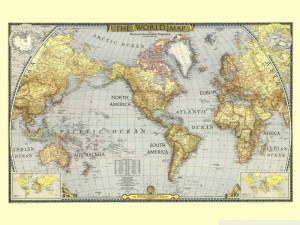 It may not be easy to conceive that women have been at the heart of political problematic between the occidental civilization and the Islamic fundamentalism. The image of the contemporary woman is till now the main element of controversy. This is what the founder of Stratfor, George Friedman, had mentioned in his book The Next 100 Years. For him, Ossama Bin Laden’s “Letter to America” was expressive enough, where he wrote: “You are a nation that exploits women like consumer products, or advertizing tools, calling upon customers to purchase them.”[1] This view is somehow debated inside the Traditional Catholics, fundamentalist Protestants, Orthodox Jews and many branches of Buddhism, as Friedman continues to remark. And he explains that Al-Qaeda’s idea belongs to their traditional understanding of the family in whole, and of the marital and extramarital relations. For them, “Women who move outside the home invite extramarital sexuality just by being there.”[2] They banned women from going out on the streets.
It may not be easy to conceive that women have been at the heart of political problematic between the occidental civilization and the Islamic fundamentalism. The image of the contemporary woman is till now the main element of controversy. This is what the founder of Stratfor, George Friedman, had mentioned in his book The Next 100 Years. For him, Ossama Bin Laden’s “Letter to America” was expressive enough, where he wrote: “You are a nation that exploits women like consumer products, or advertizing tools, calling upon customers to purchase them.”[1] This view is somehow debated inside the Traditional Catholics, fundamentalist Protestants, Orthodox Jews and many branches of Buddhism, as Friedman continues to remark. And he explains that Al-Qaeda’s idea belongs to their traditional understanding of the family in whole, and of the marital and extramarital relations. For them, “Women who move outside the home invite extramarital sexuality just by being there.”[2] They banned women from going out on the streets.
Al-Qaeda’s solution expresses their incapacity of handling the existence of women inside the active society; it is demonstrated in the “Grand Rapt”.
In few words, the big political debate is whether a woman that belongs to a culture is to be liberal or not. In fact, the transformation of women’s role in history is similar to the transformation of men’s role. It is a natural response to the demanding change of social identity. By social identity, I mean the way a society defines itself through the development of history. The course of history is ruled by the tendency of the human individual to get rid of all his anxieties, mainly, by creating tools to help him with his defensive tasks. All tasks are defensive, and all the actions a man or a woman does are to adapt and to self-preserve, seeking the restfulness of mind and body. This is why humanity did progress to the stage of industrialism, mainly during the 19th and 20th century in Europe, where a shift towards a new life style happened. This meant a smaller family, and less occupation in nurturing. That gave women more time to assume other responsibilities inside the active society.
The development of women’s social personality in industrialized countries happened differently than in other parts of the world. It’s just another phase in the development of humankind, which surely could never remain static. In fact, the model of Eve is history, and the model of the woman-mother does not seem to be complete. Modern social women are not in there minimal level of existence, but they are active. It finds its roots in Greek mythology as Helen of Troy, or in the history of France as Joan of arc, where in both stories the two women played central roles in warfare and politics. This analysis slips away from mere external observations, because women used as tools for marketing is not a precise thing to say because it is not near from being a real role of the occidental woman, she’s mainly a worker and a struggler. Till 2010, 58% of the American women above 15 participate in the work force[3]. Women also earn almost 60% of university degrees in America and Europe[4].
Since women have been and will always be, and around them will still happen cultural controversy that affects political relations between nations, they constitute one of the political imperatives for both sides. She is one of the most important resources, just as manpower for boosting armies in times of war.
It is natural that men fight over women as it is the primitive form of politics. Yet it is analogue that cultures fight for their own views on women, and that is nowadays an important element of the modern clash of cultures. But it is only the progress of nations that dictates its social demands from both men and women, and by this shaping their roles in society.
Sommes-nous Arabes? Phéniciens? Orientaux? Occidentaux? Sur l'identité libanaise… (I)

2013, Lebanon
Penser et faire le féminisme au Liban revient à penser évidemment la problématique de l’identité: suis-je une citoyenne arabe? Orientale? Asiatique? Comment me situer en tant que libanaise?
Les idées reçues qui sont promues habituellement au Liban font de « l’Orient » le siège du mysticisme et des valeurs fondamentales, et de « l’Occident » celui de la rationalité, du matérialisme et de l’individualisme, imprégné de l’éclatement des repères et des valeurs. C’est comme si l’on faisait écho, par exemple, aux canons de la sociologie wébérienne qui répartit les sociétés en un classement binaire: modernes et relationnelles – exceptionnalité de «l’Occident» dont l’histoire est fondée sur la raison et l’autonomie de l’individu -, versus charismatiques et magiques ou irrationnelles et mystiques – empreintes de croyances collectives dont l’épicentre fondateur est la religion, la tribu, immobiles et archaïques -; ou même au classement de Durkheim: sociétés primitives versus sociétés sorties du religieux.
En effet, certains experts libanais véhiculent une logique binaire lorsqu’ils opposent « l’Orient » à « l’Occident », comme s’il s’agissait de deux entités aux identités figées et imperméables, deux systèmes politiques et économiques distincts, deux architectures sociales et mentalités collectives. L’Orient est désigné par la terre de « la pureté originelle » et, comme le dit Georges Corm: « ses enfants sont les héritiers des grands prophètes à qui l’Occident doit tout, qu’il conserve le flambeau de Dieu dont l’Occident ‘barbare’ s’est éloigné en se vautrant dans l’amour des biens matériels, en rabaissant le statut de la religion dans ses sociétés, en abandonnant les codes d’honneur familiaux incarnés dans le statut bridé de la femme, d’abord épouse et mère, et dans l’autorité du chef de famille, le ‘patriarche’. Pour eux, l’Orient est le monde de la lumière et de la foi, l’Occident celui des ténèbres et de l’incroyance. Ses philosophes athées lui ont fait perdre son âme, en particulier par cette laïcité, machine de guerre contre Dieu, qui prétend séparer la terre du ciel, le temporel du spirituel ».
Je pense que la polarité Orient-Occident voile les dynamiques d’échange et d’interpénétrations qui s’opèrent depuis des siècles entre les sociétés, les groupes et les individus. Par ailleurs, lorsqu’elle charrie avec elle une réaction aux abus de la « laïcité » ou au danger qu’elle implique, elle tend à définir cette dernière négativement, à savoir une lutte antireligieuse et anticléricale, équivalente à « athéisme, hérésie, matérialisme, nihilisme, perte de la religion ».
Dans cette optique, la laïcité devient homogène, sinon assimilable à l’athéisme, et du moins à l’agnosticisme sceptique; c’est comme si elle était le fondement d’un système socio-politique sans foi ni loi ! Or, on sait qu’au Liban, être laïc veut dire aussi être non-clerc, mais croyant. D’où le paradoxe, en somme révélateur de la difficulté d’expliquer le signifiant du concept « laïcité ». Et c’est pourquoi on gagnerait beaucoup au Liban à prendre en considération les conditions de son émergence, son historique et la diversité de ses applications.
En effet, si l’on se base sur de récentes études sur la laïcité en Europe et en Amérique du Nord, l’on se rend compte qu’il en existe une pluralité de définitions, et qu’elle peut constituer un idéal positif qui prend sens pour quelque chose et non pas contre quelque chose. De plus, elle n’est pas l’apanage d’une société ou d’une culture donnée.
Selon Mehrzad Boroujerdi:
« Secularism is neither amoral nor anti-ethical. Instead it advocates the doctrine that ethical standards and conduct should be determined exclusively with reference to the present life and social well being without reference to religion (…). Islam, like Judaism and Christianity, has a great potential for secularization because as an organized religion it does not divorce itself from society and historical events. In this sense, it does not share the non-historical, monastic and otherworldly orientation of Hinduism and most other Far Eastern religions. The chiliastic orientation of Islam in general and shi’ism in particular which promises to deliver humankind from its wickedness into an age of justice and piety has contributed to its secular capacity (…).
« The fact that the field of interpretation in Islam has long been subject to contesting explications by jurists has contributed to its potential for secularization. The disagreements between the Asharits and the Mu’tazilits, Avicenna and Al-Ghazzali; and the Akhbaris and the Usulis serve as examples of this contested terrain. How else could the Mu’tazilits’ and the Usulis’ rationalist philosophy, Sufism’s emancipation, and Babism’s political radicalism emerge from within this seemingly closed arena? Furthermore, one should also pay attention to the role played by Sufi mystics in Islam. The popularity of mystical teachings that emphasis individualization of faith (‘inwardness in religiosity and aggressively questioning the role of the ulama and mediators between God and the believer’) serves to demonstrate that secularizing tendencies are present in Islam ».
Aussi, selon Malek Chebel:
« Si la laïcité n’a pas été une préoccupation de l’Islam, on peut affirmer que plusieurs dynasties puissantes, les Abassides à Bagdad, les Ummayyades d’Occident, à Cordoue et à Grenade, les Zirides de Tunisie et d’autres encore en Afrique, en Asie, en Turquie ou en Perse, l’ont cultivée comme une situation de fait, sans pour autant la théoriser, ni la transformer en un contrat social impliquant les gouvernants et leurs sujets. Le contenu humaniste qui avait cours, la différenciation entre la prérogative de l’imam et celle du calife, ainsi que le personnalisme psychologique ont agi comme autant de valeurs importantes. Certes, la laïcité telle que nous la comprenons aujourd’hui demeure une invention européenne (…), mais l’Islam n’a pas refusé de s’y confronter au risque de devoir la combattre. Combien de penseurs rationalisants ont été ni plus ni moins que des laïcs implicites dans un environnement de religiosité explicite ? ».
Je cite aussi Muhammad Arkoun:
« La religion peut s’exprimer, comme l’art peut s’exprimer. Toutes les formes de l’art, toutes les formes de la religion peuvent s’exprimer, à condition qu’elles ne portent pas atteinte à l’ordre public, bien sûr. Et tout droit fait l’objet d’une libre confrontation dans l’espace social. Et tout ce qui intéresse l’homme, tout ce que l’homme fait dans la société, est intéressant, apporte de l’intérêt (…). La laïcité ouverte n’interdit jamais rien (…). C’est contre la démocratie et contre l’esprit humain (…). Et l’Islam peut jouer le jeu de la démocratie tout comme le Christianisme. Il n’y a aucune raison pour laquelle il ne le pourrait pas. Et d’ailleurs, théologiquement, il est même en meilleure position puisque (…) un ‘alim peut donner une fatwa, pourtant, c’est une fatwa parmi d’autres. Elle n’oblige personne ».
Par ailleurs, même si l’on ne veut pas parler de « laïcité », mais de « démocratie », sa conception et son application restent encore ouvertes à débat. Selon Amartya Sen, la « démocratie » n’est pas une spécificité du «monde occidental» si l’on s’attarde à son « rôle instrumental » qui permet de générer des incitations politiques, et à sa « fonction constructrice » dans la formation des valeurs et dans la compréhension de la force des revendications des droits et libertés, ainsi que de leur faisabilité. « Ces mérites n’ont pas un caractère régional ou local, pas plus le fait de prôner l’ordre ou la discipline ». Amartya Sen avance à cet effet les exemples de l’Andalousie médiévale, de l’empereur mongol Akbar (16e siècle) qui croyait au pluralisme et au rôle constructif des discussions publiques, etc., pour démontrer que la tolérance, le pluralisme et la liberté ne relèvent pas d’une « exception occidentale ».
En effet, la tendance à la simplification et aux généralisations arbitraires constituerait selon cet auteur une erreur d’appréciation résultant d’une erreur conceptuelle qui perçoit la « démocratie » en termes de vote et d’élections, plutôt que dans la perspective plus large du débat public. Il suffit pour cela de s’attarder aux théories de certains intellectuels européens et américains faisant autorité, comme Samuel Huntington, dont l’étude aboutit à la conclusion qu’il existe en « Occident » un sens de l’individualisme et une tradition des droits et libertés uniques dans les sociétés civilisées. Or, les discours de plusieurs instances et élites au Liban rejoignent en quelque sorte cette vision qui néglige dans l’analyse de l’histoire de la « démocratie » les immenses héritages intellectuels de la Chine, du Japon, de l’Asie de l’Est et du Sud-Est, du sous-continent Indien, de l’Iran, du Proche-Orient et de l’Afrique; ainsi que les échanges, les transferts, les adaptations et les interpénétrations qui sont advenus au fil des siècles.
A mon avis, si l’on n’arrive pas à s’entendre sur les définitions des concepts de « laïcité » et de « démocratie » en contexte libanais, on pourrait alors tenter d’en inventer d’autres, adaptés à ce contexte et qui décriraient par exemple la catalyse de l’alchimie du mieux-vivre ensemble dans une société pluraliste, le lieu de la rencontre et du débat, l’égalité entre tous les citoyens, etc.; qui décriraient aussi ce que l’on trouve au Liban: non un phénomène de « sortie de la religion » au sens de son rejet ou de son confinement dans une sphère privée, ni une dissolution de référentiels collectifs, mais des indices ou des témoignage de processus d’adaptations et de recompositions identitaires plurielles mettant en jeu des relations de complémentarité et d’interdépendance entre l’individuel et le collectif, le religieux et le non-religieux, et au sein desquelles la confession ‘officielle’ ne constitue plus la seule structure qui commande la forme politique de la société libanaise et qui définit l’économie du lien social.
Finalement, la polarité Orient-Occident charrie une définition des nations comme relevant de cultures à essences exclusives: la nation libanaise par exemple, pour se fondre dans l’ensemble « oriental », est définie en fonction de la culture « arabe ». Ainsi, il y aurait exclusivité du signifiant ‘arabe’, dont le signifié mêle les connotations linguistiques, ethniques et religieuses. Et bien que le métropolite grec-orthodoxe Georges Khodr dénonce l’amalgame entre « arabité » et « islamité » en évoquant l’apport substantiel des chrétiens orientaux à la littérature et la pensée arabes (notamment à l’époque abbasside et durant la Nahda), il soutient que le chrétien ne s’approprie pas l’héritage historique arabe de la même manière que le musulman, omettant ainsi les échanges, les adaptations, les acculturations ainsi que le brassage d’idées, de valeurs et d’aspirations méditerranéennes, sémitiques, européennes, extrême-orientales, persanes, etc. qui font en sorte que ce qu’on nomme la nation libanaise est un ensemble mouvant de référents complexes, de questionnements formulés par des personnes et des collectivités à propos d’elles-mêmes, et les réponses plurielles à ces questionnements.
L’arabité n’est pas le seul cadre de référence au Liban; ni d’ailleurs la phénicianité anti-arabe qui tend à écraser les étapes ultérieures à l’Antiquité phénicienne. L’arabité ne véhicule pas à elle seule la présence du sacré et du religieux dans la société et l’héritage pluriel de celle-ci: phénicien-cananéen, perse, égyptien, byzantin, assyrien, turc, croisé, mamelouk, ottoman, français, soviétique, britannique, américain… Après tout, le Liban, tant dans son passé qu’actuellement, ne vit pas un état d’isolement, de retrait ou d’autocentrisme, mais se développe en grande partie grâce aux relations et interpénétrations des diversités: que celles-ci proviennent d’invasions-occupations, de migrations, d’échanges commerciaux, etc.
[hr]
Notes:
Hervieu-Léger, D., Willaime, J.P., Sociologies et religion. Approches classiques, Collection « Sociologie d’aujourd’hui », Presses Universitaires de France, Paris, 2001.
Corm, G., Orient-Occident, op.cit., p.82.
[1] Cf. Terzani, T., Lettres contre la guerre, Liana Levi, Paris, 2002.
– Cf. Ali, T., Le choc des intégrismes. Croisades, djihads et modernité, Textuel, Aris, 2002.
– Mohammad Arkoun qualifie aussi l’Orient et l’Occident de deux entités différentes, dans « Clarifier le passé pour construire le futur », CM, no.16, hiver 1995-96, 12 p. Mais sa vision ne rejoint pas celle de Corm; en effet, cette dernière fait écho à mon avis aux travaux de plusieurs historiens des religions américains des années 70-80 qui fondent leurs travaux sur les correspondances ‘génétiques’ découvertes entre le polythéisme antique et le pluralisme de la société moderne (et de l’individu). David L. Miller par exemple qualifie de « polythéistes », les manifestations sociales, philosophiques et psychologiques de la pluralité de la vie quotidienne, dans la mesure où elles sont issues d’une situation « d’essence religieuse » (Le nouveau polythéisme, Imago, Paris, 1974, p.19). C’est également la thèse de la « pluralité radicale du moi » que soutient James Hillmann, fondant sa psychologie polythéiste sur la « pluralité des archétypes » (Le polythéisme de l’âme, Mercure de France, Paris, 1982, p. 11). Ceci n’est pas sans rappeler la vision de William James qualifiant le polythéisme de représentation imagée de l’univers sous forme de pluralité, par opposition au monothéisme absolument unitaire selon lui (The Varieties of Religious Experience. A Study in Human Nature, Fontana, London, 1960, pp. 141 et 500).
– Tout comme la polarité sociétés « fermées » (« à pouvoir unique, unitaires, monistes, totalitaires ») – sociétés « ouvertes » (« pluralistes », en référence aux sociétés « occidentales »), telle que décrite par exemple par André Reszler dans Le pluralisme, op.cit., pp.14-15.
– Je note qu’au Liban, al-‘ilmānī (le laïc) est une personne qui n’est pas un homme ou une femme de religion – clerc, religieux, religieuse, prêtre, mufti, cheikh, etc. Cela ne veut pas dire que al-‘ilmānyya – traduite parfois par « sécularisation » et d’autres fois par « laïcité » – est dissociée de l’appartenance confessionnelle.
– À titre d’exemples parmi une littérature abondante, cf. Hervieu-Léger, D., Le pèlerin et le converti. La religion en mouvement, Champs-Flammarion, Paris, 1999; Hutchison, W.R., Religious Pluralism in America. The contentious History of a Founding Ideal, Yale University Press, 2003; Daddy, A., Le Coran contre l’intégrisme, Labor-Castelles, Paris-Bruxelles, 2000, pp.158-159 (selon Daddy, la laïcité n’est pas l’équivalent de l’athéisme); Milot, M., « La laïcité: une façon de vivre ensemble », Th, vol. 6, no.1, mars 1998, pp.9-28 ; Pena-Ruiz, H., Histoire de la laïcité, histoire d’une genèse, Gallimard, Paris, 2005.
Boroujerdi, M., « Can Islam be secularized? », Ghanoonparvar, M.R., Farrokh, F., Transition: Essays on Culture and Identity in the Middle Eastern Society, Texas A&M International University, Laredo TX, 1994, pp.54-60.
Chebel, M., Le Sujet en Islam, Seuil, Paris, 2002, p. 282.
Cf. Haleber, R., « Le désarroi de la raison islamique face à la modernité occidentale », http://members.lycos.nl/haroun/ak.html, consulté: 2004-05-28.
Sen, A., La démocratie des autres. Pourquoi la liberté n’est pas une invention de l’Occident, Payot, Paris, 2005, p. 81.


